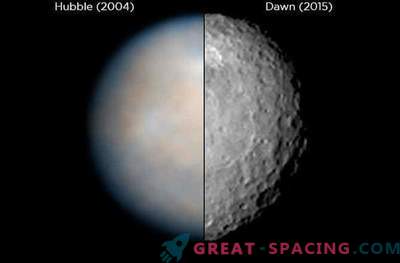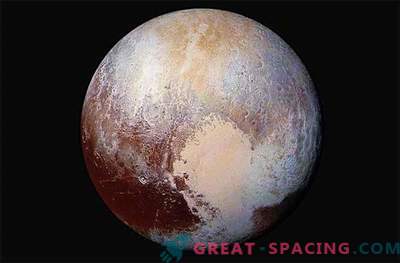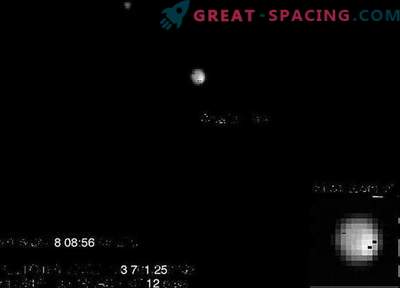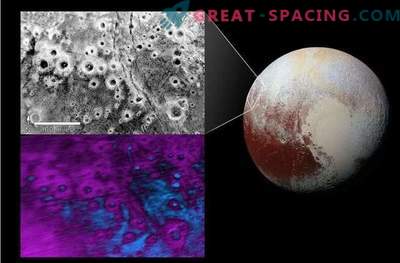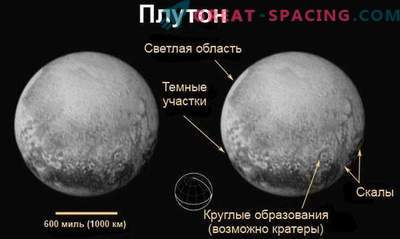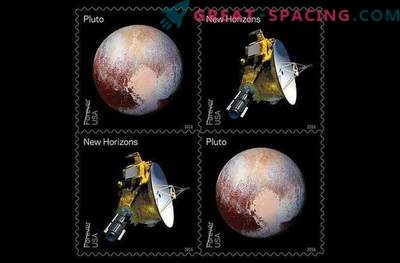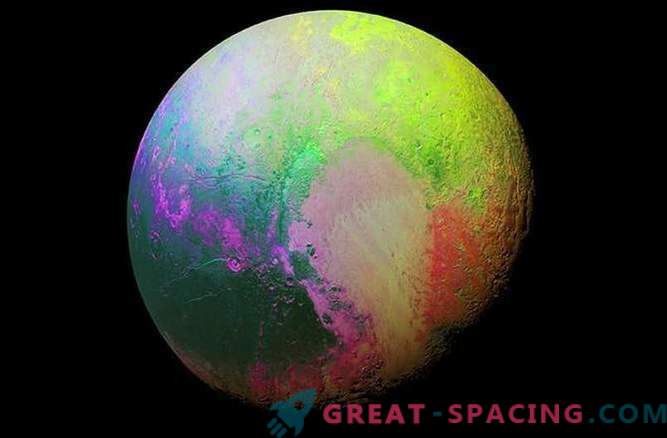
Until July of this year, we had only a vague idea of how Pluto would look like a close-up. Now, thanks to the passage of the New Horizons mission, we have information about this tiny world, about its system of complex ice plains and mountains, its chemical composition, and its shaky, but complex atmosphere.
The conclusions of the mission were a real revolution - we have a complex, dynamic world living in what was once considered a dead and frozen region of the solar system.
Due to the large variety of the surface Pluto, it is very difficult for scientists to investigate various formations on the surface. They created psychedelic Pluto with contrasting colors.
Although science often imitates art, this interpretation of Pluto’s hemisphere has an important scientific purpose. The technique is known as “principal component analysis” and is used to see minor changes in surface composition. The observation was made thanks to three highly sensitive black-and-white panchromatic and four color multispectral cameras, structurally combined in the MVIC block (short for Multispectral Visible Imaging Camera), during the closest mission span, when the spacecraft was at a distance of 22,000 miles (35,000 km) from the dwarf the planets. The composition of the surface of Pluto, made the mission of New Horizons, presented this week in the Department of Planetary Sciences (DPS) at a meeting of the American Astronomical Society (AAS) in National Harbor, Maryland. This false pseudo-color image of Pluto shows what this icy world really looks like.
Bursts of bright hues stand out against the background of small color differences between different regions of Pluto. Thus, you can immediately identify the plains and canyons. We can distinguish the older Pioneer Terra areas (to the north) and compare them with the surprisingly young ice streams in the Sputnik Planum region (the western part of the Tombo Regio - the huge heart-shaped region of Pluto). On the right side of the image, we can see a shadow over Pluto’s fancy snake skin, known as Tartarus Dorsa.
Pluto gave us a huge number of amazing discoveries, and although the New Horizons mission is sinking deeper into the Kuiper Belt, we have months to study the data sent from the spacecraft. In other words, we are only on the threshold of discoveries of the mechanisms occurring on a dwarf planet, which are also as exciting as mysterious.
